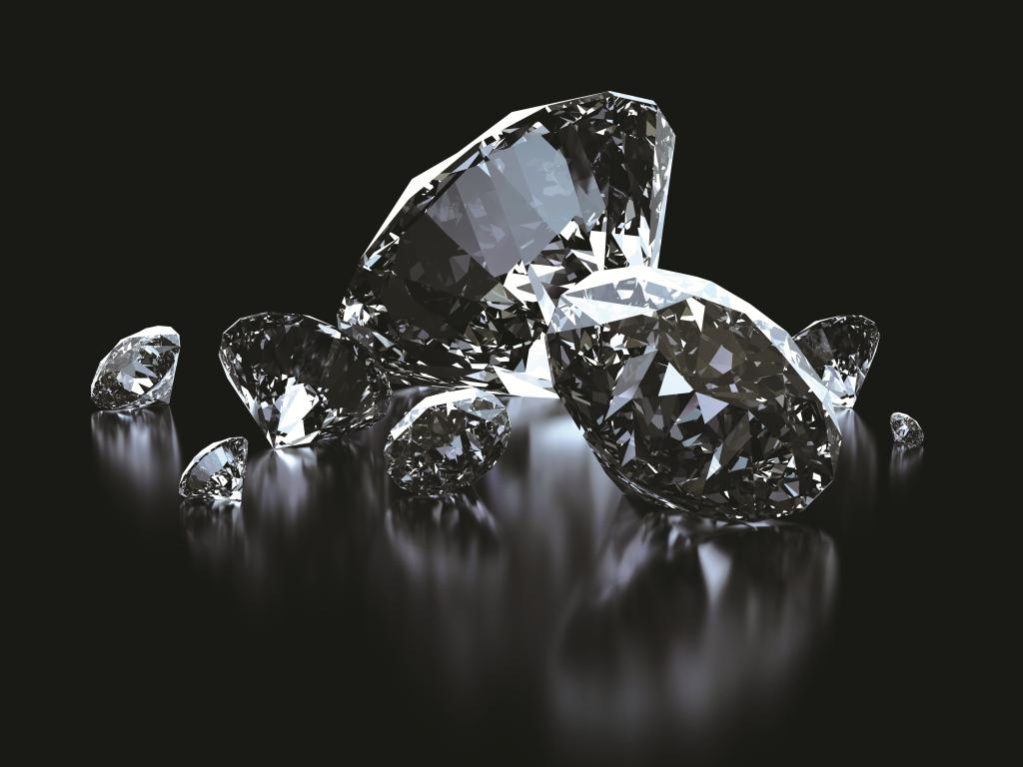They dig profitably the desert soil of Botswana searching for stones – that say more than words – for fingers from Belgium and China to New York. They are so tiny that according to diamond experts, all the diamonds mined in the world, since 1870, would not fill a London double-decker bus.
This is the 44-year story of Botswana’s diamonds. An industry that has overcome hurdles that have tripped many in a string of African countries: ownership laws; competition; land battles and the threat of blood diamonds.
This is also the story of the world’s richest and largest diamond mine, Jwaneng, a huge hole in the desert, ringed by roads, 200 kilometers north of the capital Gaborone.
Diamondfacts.org says diamonds earn approximately $8.4 billion a year for Africa and most come from Botswana. In Botswana, diamonds contribute 33% of GDP and are mined by a joint venture, between the government and De Beers, called Debswana. The venture also means life.
“For our people, every diamond purchase represents food on the table; better living conditions; better healthcare; safe drinking water; more roads to connect our remote communities and much more,” the former President, Festus Mogae, once said.
As a market leader, Debswana can defend itself by holding on to diamonds to keep prices up. This is one reason why production fell in 2015.
According to the General Manager of Jwaneng, Albert Milton, the mine produced about 11.3 million carats in 2014.
“This number went down by 14 percent in 2015 to nine million carats due to market related conditions. We invested about $2.2 billion in 2010 and we are positive about the outlook.”
The mine aims to more than double diamond production to 20 million carats this year.
The big threat that could dull Botswana’s sparkle comes from competition elsewhere.
The bosses at Jwaneng fear that miners from Zimbabwe, Angola, Namibia, Liberia, Canada and Russia will find more and more. This could loosen Botswana’s grip on supply and with it power over price.
A geological survey found that Russia could supply the world market for the next 3,000 years as there are trillions of carats lying beneath a 35-million-year-old asteroid crater in Siberia, in the east of the country – it has more than 10 times the global stockpile.
Hanns Spangenberg, a Senior Economist at NKC African Economics, says Botswana’s single largest rating constraint is the country’s dependence on the diamonds, which exposes the economy to external shocks.
“Depressed external demand for diamonds has had extreme consequences for the landlocked country, with real GDP contracting by 0.3 percent in 2015, while the government has been forced to record a fiscal deficit in 2015/16 after recording surpluses the previous three fiscal years,” he says.
Spangenberg adds that authorities are well aware of Botswana’s exposure to the diamond sector, and have tried to diversify the economy – the most significant being the Economic Diversification Drive (EDD). They are pouring state coffers into the dairy, textiles and clothing sectors with the hope of creating jobs.
Ahmed Bin Sulayem, the Chair of the Kimberley Process – an organization fighting to stem the flow of conflict diamonds – warned in a statement in February, that the outlook was not convincing for the diamond sales industry.
“[It] will be a challenging year for our industry with continuing oversupply, low commodity prices and tightening liquidity. The social impact of these combining factors is likely to be severe and felt across large parts of the world’s diamond producing regions.”
It seems the story of diamonds, that started with discoveries in 1870, in Kimberly, is far from over.
